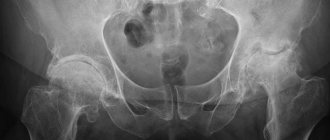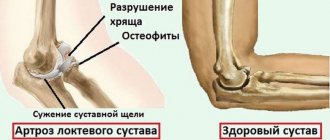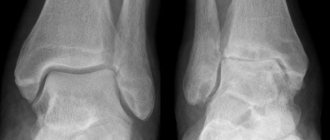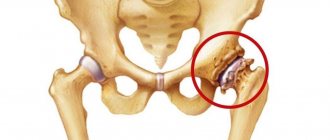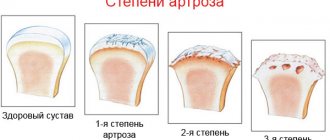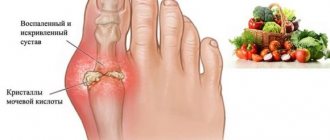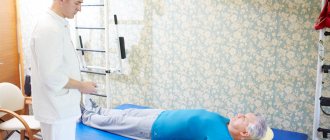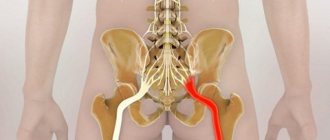Animal joints are susceptible to inflammatory processes, accompanied by severe pain and physical impairment of the musculoskeletal system. The joint capsule, cartilage, and surface membranes of the joints are most often damaged.
Diagnosis of the disease in animals occurs in the later stages due to mild symptoms and can occur in both acute and chronic forms. Arthritis occurs in most cats by age 10, but can appear at an earlier age. Treatment is carried out with medication, proper nutrition and physiotherapy.
Causes of arthritis
The causes of arthritis may depend on the breed of the animal (genetic characteristics), age, lifestyle, and can also be a consequence of diseases.
The processes of cellular nutrition of organs and tissues weaken as a result of aging of the body. The elasticity of connective tissue decreases. The animal may experience pain when moving, running, jumping, playing or fighting. Therefore, the main cause of arthritis in cats is old age, but other possible causes of the disease should not be ignored.
Metabolic disorders
The lack of substances necessary for the development of cartilage tissue leads to its thinning and disruption of the structure of bone tissue. The development of the disease is facilitated by a deficiency of calcium, phosphorus or their improper absorption by the body.
Causes of Arthritis in Cats
Autoimmune diseases
Rheumatoid arthritis in animals is associated with the synthesis of substances that destroy their own cartilage tissue. This disease spreads throughout the body and has a negative impact on all joints.
Injuries
Dislocations, bruises and sprains after falling from a height or participating in a fight cause tissue damage to the musculoskeletal system (traumatic arthritis). This type also includes birth trauma due to deformation of the hip joint.
Obesity
The inflammatory process is caused by the excess weight of the domestic cat, which puts additional stress on the joints, which reduces the amount of intra-articular fluid.
Infectious processes
Microorganisms (viruses, bacteria, fungi) cause a purulent form of arthritis. When an infection enters the bloodstream, it can destroy cartilage tissue and harm the entire musculoskeletal system.
Genetic predisposition
Artificially bred breeds (Scottish Fold, British, Persian, Abyssinian, Maine Coon, Scottish Fold) have a defective gene associated with hip dysplasia. Often there are congenital features in the structure of connective cartilage tissue.
Pedigree cats have a genetic predisposition to diseases of the musculoskeletal system
Frostbite and hypothermia
If the animal is left outside or in a draft for a long time, it can become hypothermic. Extreme frostbite leads to partial or complete necrosis of cartilage tissue. As a result, the pet experiences joint pain or the need for amputation of the damaged limb.
Age-related changes
Cartilage tissue thins as cats age, causing bones to touch and become inflamed when moving. The greatest likelihood of developing this disease is over the age of 10 years. The shoulder or elbow joints are predominantly affected. Since pets are very mobile and jump long distances, the front legs take on the greatest load of body weight.
Composition of cartilage tissue
The following factors can provoke the disease:
- poor diet;
- weakened immune system;
- frequent hypothermia;
- improper living conditions (unsanitary conditions);
- excessive physical activity.
The main reasons for the appearance
As a rule, with many joint diseases, the main “effect” of them is the complete or partial destruction of the hyaline cartilage that covers the proximal and distal ends of the bones. Sometimes this happens for no apparent reason, but more often it’s all about age-related changes.
It also happens that inflammatory/degenerative joint lesions develop against the background of secondary infectious diseases, as well as various injuries. But many biologists and veterinarians believe that in cats specifically, many types of these pathologies are of an autoimmune nature. It is precisely because of the “violence” of one’s own defense mechanisms that, for example, rheumatoid arthritis develops.
Types of arthritis
The joint consists of a cartilaginous surface of the bone, a capsule, and an articular cavity filled with synovial fluid. Inflammatory processes occur in the inner part of the surface of the articular cartilage (synovial membrane). Their varieties depend on the causes of the pathology and have the following characteristic features:
- Rheumatoid is the result of autoimmune processes, which consists in the development of antibodies that can attack their own cells and not recognize harmful bodies. This causes disruption of motor processes due to infections and viruses (herpes, mycoplasma).
- Infectious - the result of inflammation due to the introduction of a special protein of bacterial or fungal microflora. Parasites or viruses enter the blood and then into the joint, causing side effects of the body: intoxication, fever, increased body temperature, acute pain.
The entry of a foreign protein into the blood can occur through the bite of insects, mammals (mice, rats), through scratches and bruises of a cat. To avoid this, it is necessary to vaccinate the animal every year so that its immunity can recognize viral bodies and easily fight them when infected.
- Reactive inflammation is subsequent inflammation of the joint against the background of general intoxication due to infectious lesions of other body systems (digestive, reproductive, genitourinary, respiratory).
- Metabolic in nature - associated with metabolic disorders due to unbalanced nutrition (lack of calcium and phosphorus) of the pet.
Therapeutic examination of a cat with symptoms of arthritis
Types of arthritis depending on the degree of damage to the joint surface:
- Traumatic - physical injuries that cause bruises, sprains, hematomas, which allow blood to enter the joint capsule. This type of arthritis is visually noticeable due to functional difficulties in movement and requires immediate treatment or surgical intervention.
- Osteoarthritis - the cartilage structures and bones of the joint involved in the destruction process wear out with age. The bone tissue grows and injures the joint. The animal's movements are accompanied by a crunching sound.
Arthritis symptoms
The symptoms of arthritis in cats are poorly detected in the early stages; in order to see health problems, you need to carefully monitor your pet. If you notice similar signs in behavior with symptoms of arthritis, you should not rush to conclusions. It is advisable to contact a veterinarian and conduct a thorough diagnosis if the following signs are detected in the animal’s behavior:
- Caution in behavior - the cat walks slowly or carefully, overcomes obstacles with difficulty, jumps, runs or plays less, avoids high climbs, mostly stays on the floor.
- Lack of play activity - plays lying down or is not active enough, does not show interest in toys.
- She walks past the tray - due to the high side, it is inconvenient for her to relieve herself in the tray if there is pain in the joints or difficulties in movement. It can also indicate to owners problems with their health.
- Apathy and lethargy - avoids communication and games with other animals or owners.
- Decreased appetite - eats little or rarely, does not ask for treats.
- Lack of grooming - due to pain and difficulty in bending the joints, grooms the coat less often or does it with difficulty.
Apathy and lethargy in a cat are one of the symptoms of the disease.
Additionally, you can look for excess weight due to decreased activity, but some cats lose weight when they stop eating. When moving, you can hear a crunch or notice that her paws periodically cramp. In this case, she will walk along a curved path, trying not to step on the sore paw or shake it, experiencing discomfort. As a result of inflammation, body temperature may increase.
Symptoms
A harbinger of the disease is a decrease in physical activity. The following symptoms cause suspicion of arthritis:
- the cat stops jumping on high objects, falls on his paws, limps, is cautious on the stairs, does not sharpen his claws;
- reacts aggressively to touching a sore spot;
- swelling and local hyperthermia develop in the affected area;
- the cat becomes apathetic, does not play, lies and sleeps;
- the animal shits next to the litter box because the pain prevents him from getting into the toilet;
- due to adynamia, pets are rapidly gaining weight;
- with arthritis caused by an infectious disease, vomiting, refusal to feed, ruffled fur, drooling, rhinitis, and conjunctivitis are observed.
Diagnosis of the disease
First of all, the doctor at the veterinary clinic examines the cat’s joint parts, then prescribes a series of tests to diagnose the disease and its causes:
- X-ray to assess the degree of bone tissue growth and joint narrowing.
Bone X-ray
Confirmation of the diagnosis occurs if new growths are detected in bone tissue, a noticeable narrowing of the joint or joint space, thickening of the soft tissue around the joint, and the presence of effusion at the site of the lesion. Additionally, tomography may be prescribed, which allows you to see the condition of cartilage and bones with high accuracy in determining the disease.
- Culture of selected synovial fluid helps determine the causative agent and sensitivity to drugs prescribed for treatment.
If there is edema, the doctor takes a sample of the synovial fluid with a thin needle; the result of the analysis will be to identify the presence of infection in the fluid and determine the type of strain.
- Blood (general biochemical) and urine tests to determine the extent of the disease and identify other pathologies in the pet’s body.
Prescribing drugs is permissible only if there are no disturbances in the functioning of the cardiovascular system.
Examination of the cat
In rare cases, a biopsy is performed - taking a sample of internal material with an arthroscope for further examination.
For small animals whose limbs are too small for examination, exposure of the damaged area (arthrotomy) is used to take a biopsy, conduct an examination and restore connective tissue.
If the cat reacts poorly to examination by the clinic’s doctors, before contacting you can create a video recording where the characteristic behavior of the cat with arthritis is clearly visible.
Treatment methods
Treatment is complex, including treatment of symptoms and supportive techniques. The doctor prescribes indications for living conditions and recommendations for proper nutrition.
Surgical intervention
Surgery is performed in emergency cases associated with serious damage to bone or joint tissue, for example, after a serious fight or a fall from a great height.
Drug therapy
Medicines that reduce pain are prescribed, as well as nutrition that restores bone tissue and contains essential microelements. Dietary supplements containing chondoroitin and glucosamine reduce the degenerative process in cartilage. As a rule, premium quality dry and wet cat food with a high content of fatty acids, docosahexanoic acid and alpha-linoleic acid, is prescribed.
Depending on the purpose of use, medications are divided into the following types:
- Hormonal medications effectively relieve pain, but have a number of side effects, so they are prescribed by a doctor extremely rarely. For example, "Prednisolone" or "Hydrocorizon".
- Anti-inflammatory - non-steroidal painkillers, have a number of side effects, and in some cases are not individually tolerated by animals, so they are carefully selected by a doctor. These may be Meloxicam, Ketoprofen, Carprofen, Tolfedine.
- The drugs "Meloxicam" and "Piroxicam" are prescribed once a day. They have an anti-inflammatory effect and do not contain steroids.
- Analgesics are medications that are used for humans, but can also be used for animals, have narcotic components and are prescribed strictly according to a doctor’s prescription: Tramadol, Buprenorphine, Amantadine.
Meloxicam is an anti-inflammatory drug
The medicinal product "Phytoelita" of plant origin is used to prevent many diseases, improving the immune system and causing balance in organ systems, without causing side effects.
Physiotherapy
Massage and joint stretching exercises, including swimming, are prescribed if the cat responds positively to these procedures. Physiotherapy also includes acupuncture under sedatives or anesthesia when the animal is at rest, electrical myostimulation, and the use of laser.
A month after applying the treatment, a re-diagnosis is carried out, a prognosis of the development of the disease is carried out, and the doctor prescribes further recommendations.
Drug treatment
In most cases, treatment of joint diseases in cats involves the use of non-steroidal anti-inflammatory drugs (NSAIDs) , which not only stop the inflammatory response, but also significantly reduce the intensity of pain. The main disadvantage of drugs of this type is the impossibility of their long-term use (in this case, the liver and kidneys suffer greatly). To minimize the risk of side effects, the drug must be selected carefully and used with caution.
Patient care
Creating the right conditions to improve your cat’s quality of life involves selecting a tray with a low side and a large size. Elimination of drafts in the pet’s area of residence, prohibition of high lifts. Selecting a soft bed at a low level from the floor, choosing a warm place for a house or bed, assistance in grooming and trimming nails.
Creating good conditions for your cat as a way to prevent arthritis
It is not recommended for a cat to spend a lot of time outside, especially in the cold season, or lie on the ground or concrete if it lives in a private house. The pet's sleeping place can be heated, this will help relieve pain
Places of ascents and descents must be protected from sudden and high jumps by the presence of additional stools.
The cat's frequented areas should be warm and dry.
Symptoms
Oddly enough, cats are animals that are much more resistant to pain when compared to dogs . Cats are able to endure for a long time without showing any signs of discomfort or pain reaction. The owner should be wary if his pet, who previously did not disdain to play and run around, began to spend much more time lying in one place.
In addition, even the most resilient animals with severe damage to the joints begin to limp, and it is difficult not to notice this. Let us list the main signs of arthritis and arthrosis:
- The cat's reluctance to jump on chairs, climb stairs, etc.
- You may notice that even after a short rest the cat finds it difficult to get up and it hurts to walk.
- During daily toileting, the animal devotes a lot of time to frequent and prolonged licking of the joints.
Note! The main sign of something wrong in this case is a sharp reduction in physical activity.
The cat tries to sleep more and walk less. Even if before the disease the animal was a good mouse catcher, then if pathology of the joints occurs, the mice can sleep peacefully: the cat obviously will not hunt. Also, the cat may become irritated, hiss and even scratch when trying to pet it.
If no help is provided to the animal, signs of exhaustion soon begin to appear, the pet does not take good care of its fur (it simply hurts to even lift its paw). Most often, the cat lies and constantly licks its sore limbs. And further. Since the animal practically does not walk or run, its claws become greatly enlarged (due to the lack of natural grinding).
Diet as the key to joint health
It’s easy to follow a cat’s diet thanks to medicinal series food, which includes beneficial substances: omega-3, glucosamine, chondroitin, eicosapentaenoic acid. Some recommended by doctors: Hill's PD J/D, Pro Plan Veterinary Diets Feline. These foods have positive reviews from owners whose pets suffer from arthrosis and arthritis.
Table food for cats with arthritis in the form of canned, salty, fatty and sweet foods is prohibited. Only boiled lean food is allowed in the form of cereals, vegetables, meat, and dairy products can be offered.
Meat for a cat should be dietary: turkey or chicken (fillet), veal, beef, rabbit.
Sea fish is suitable, low-fat. The main thing is that no bones meet. Before serving, mince the fish thoroughly and check for small bones, then remove them to prevent your cat from choking or getting a bone stuck in the throat or mouth.
Dairy products should contain a low percentage of fat or low fat.
Gelatin diluted in broth, crushed cartilaginous bones, for example, chicken.
Nutrition should be balanced with a vitamin complex
Food additives will help relieve inflammation and improve the condition of cartilage tissue: ascorbic acid, tocopherol, glucosamine, chondroitin.
Adjuvant therapy
If a sick cat suffers from obesity, he must be put on a diet (approved by a veterinarian, of course). This is especially important for older animals.
Important! There is no need to completely deprive your pet of food, as this will lead to exactly the opposite results.
Specially designed “joint” diets are recommended. Their components contain combinations of essential fatty acids (EFAs), which serve to reduce inflammation and glycosaminoglycans (such as glucosamine and chondroitin). The latter are part of cartilage. Supplements of this type are completely safe for the animal. The problem is that veterinary practitioners are very leery of oral supplements.
In any case, they are not used as the main therapy: diet is used only as an additional therapeutic technique. In general, the use of agents injected directly into the joint is recommended.
I would like to note that in the most severe and advanced cases of joint disease in cats, they are treated using synthetic prostheses. If the joint has undergone degenerative changes, only implants can restore mobility and maintain a more or less high quality of life for the animal.
Prevention
Compliance with all of the above recommendations is the prevention of arthritis in cats. In addition, you should have regular check-ups with your doctor and follow nutritional advice. Important steps in maintaining proper animal care are:
- Nutrition control - obesity or weight loss, food supplements containing beneficial microelements are not allowed. The food should be not only dry, but also soft, and the pet should always have a bowl of clean drinking water. To improve cartilage tissue, you can give a thick gelatin drink so that the cat drinks it; it is better to add fruit syrup or honey.
- Preventing hypothermia and frostbite - creating optimal bed conditions for your pet, monitoring the time spent outside.
- Preventative medical examinations - visit your veterinarian more often to monitor the condition, especially if the cat is genetically predisposed to the disease.
- Vitamin and mineral complexes - do not forget to give your pet vitamins C and E recommended by your doctor, support his diet with nutritional supplements to prevent arthritis.
- Limiting activity - prevent your pet from jumping high and limit its frequent location at a level low from the floor: feeder, water bowl, bed. If your pet still tries to jump onto a windowsill or cabinet, place an additional object, such as a stool, in the place where he jumps.
Cats with arthritis should be limited in activity.
Homeopathic remedies and tinctures will not help cure the pet, and the money and time spent will upset the owners, because the cat’s condition can only worsen, and the correct treatment will not follow.
Diagnosis and treatment of arthritis in cats
Even if a cat has problems with coordination of movement, the owner should not make a diagnosis on his own without visiting a veterinarian’s office. Successful treatment of arthritis in cats always begins with an examination of the affected joint to determine sensitivity and degree of muscle tone. In addition, blood donation may be required for general and biochemical tests, as well as studies such as ultrasound, x-ray, arthroscopy, and myelography.
The choice of treatment for arthritis in a cat is also a doctor’s task, and therefore we will present only an approximate treatment regimen:
- Taking antibiotics (usually penicillins or aminoglycosides) if the joint disease is caused by an infection;
- The use of non-steroidal anti-inflammatory and painkillers (Meloxicam, Amelotex, etc.);
- Administration of hormonal agents (Hydrocortisone, Prednisolone, etc.);
- Taking chondroprotectors (Stop Arthritis, Artroglycan);
- To support the cat's body, the doctor will likely prescribe vitamin preparations.
In addition to taking various medications, it is important to monitor your pet’s weight. Obese cats must be put on a low-calorie diet (it may contain lean meat (rabbit, veal, turkey), sea fish, low-fat sour milk, water-based porridge, boiled or steamed vegetables).
